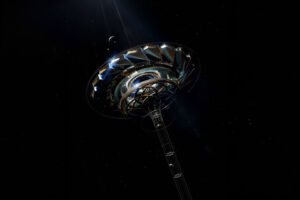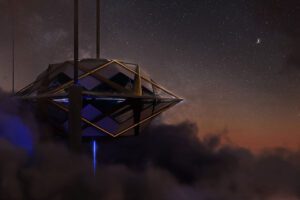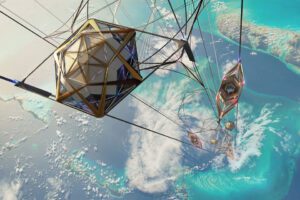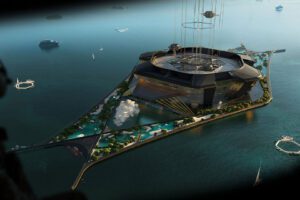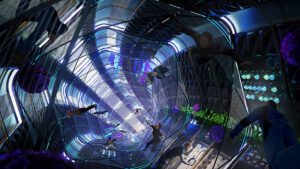In the ever-evolving realm of space exploration, “Project Ascensio” emerges as a groundbreaking initiative that explores the challenging yet exciting prospect of combining an ocean-based space elevator with a multi-use spaceport. This visionary project aims to revolutionize space access, providing a sustainable gateway for both scientific endeavors and space tourism.
Unveiling the Vision
Dreams of Earth and Sky, penned by Russian mathematician Konstantin E. Tsiolkovsky in 1895, planted the seeds of a space elevator concept that has lingered in the realm of science fiction. Fast forward to the present, and “Project Ascensio” takes a giant leap toward turning this abstract dream into a tangible reality. The project envisions a space station in geostationary orbit, tethered to a mobile seafaring platform, promising expanded delivery windows, stability, and safety.
Architectural Innovation
Renowned architect Jordan William Hughes of England received the Jacques Rogerie Foundation‘s Architecture and Innovation for Space Grand Prix Award for his contributions to the Ascensio space elevator. This futuristic concept integrates a lightweight space elevator, an ocean-based spaceport, and awe-inspiring mixed-use space stations. The marriage of advanced material sciences and technology opens the door to a sustainable and safe future for space exploration.
Material Advancements
While challenges remain in material sciences, carbon nanotubes and graphene filaments emerge as promising solutions for sustaining the tether’s weight. These advancements, though not fully realized, fuel the optimism that the Ascensio space elevator could replace inefficient rockets, offering a more efficient and payload-flexible alternative.
As “Project Ascensio” paves the way for a new era in space exploration, the dream of a sustainable and easily accessible gateway to the cosmos becomes increasingly tangible. This ambitious project combines historical dreams with modern innovations, propelling humanity toward a future where space is within reach for all. Click here for more details.


